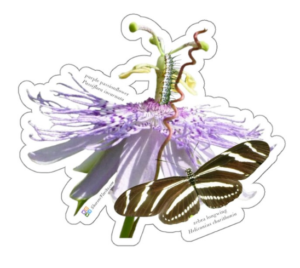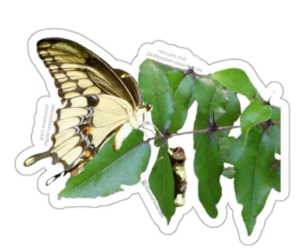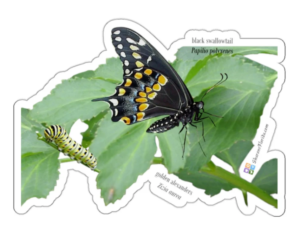Sharon's Top Ten Butterflies of Central Florida
There are probably butterfly larvae (caterpillars) in your yard, or property, that you didn’t even realize were already there living their lives. Florida butterflies lay their eggs on many native plants that are very common in our landscape, yet we may not realize they are there.
Take a look at the following native host plants listed for each butterfly to see if you have these in your landscape. If you do then it is highly likely that you already have a butterfly garden and you didn’t even know it! If you’ve seen the ‘bugs’ on your plants and are spraying them with poisons to kill them … stop … and they will grow up to be gorgeous butterflies!
Giant Swallowtail (Papilio cresphontes)
The giant swallowtail is Florida’s largest butterfly. It has a habit of flying very high in the treetops to lay eggs on its host plant, but if you have citrus trees you may have noticed the female laying eggs on the tips of the new growth within view.
They are strong flyers, but also like to glide on a breeze.
A giant swallowtail’s native host plants are in the
Rutaceae (citrus family)
The plants in this family that occur naturally in central Florida are:
Amyris elemifera (sea torchwood)
Ptelea trifoliate (hoptree)
Zanthoxylum americanum (prickly ash)
Zanthoxylum clava-herculis (Hercule’s club)
Zanthoxylum fagara (lime prickly ash)
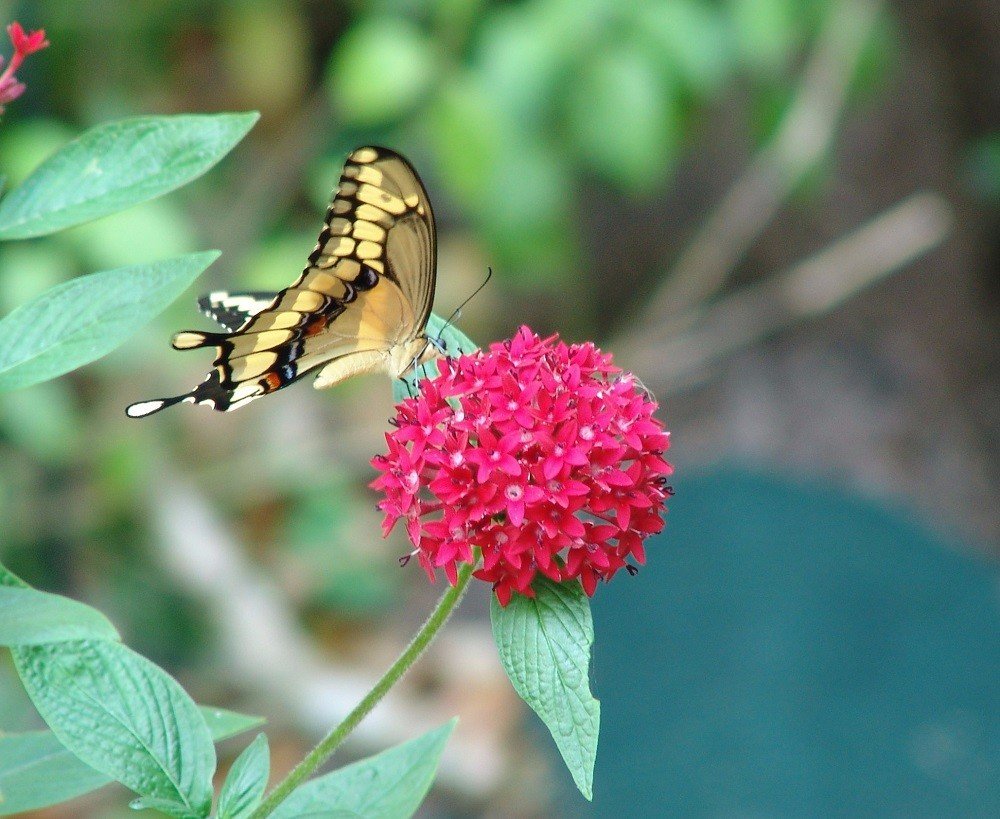
Tiger Swallowtail (Papilio glaucus)

The tiger swallowtail is Florida’s second largest butterfly. Females have two forms, a light, or yellow form and a dark, brownish, form. They lay their eggs on the new growth of their host plants, which is usually high up and out of view unless you have saplings of the following trees is the magnolia family and the new growth is lower to the ground.
A tiger swallowtail’s native host plants are in the
Magnoliaceae
(magnolia family)
The plants in this family that occur naturally in central Florida are:
Liriodendron tulipifera (tulip tree)
Magnolia grandiflora (southern magnolia)
Magnolia virginiana (sweetbay)
Zebra Swallowtail (Eurytides Marcellus)
Pawpaws are not the easiest plants to grow, or to find in nurseries for that matter, but if you live in a sandhill you may already have them and not realize it. Zebra swallowtails are commonly seen in flight searching out host plants on which to lay their eggs, but not seen that often actually depositing eggs unless you are lucky enough to have a paw paw patch.
A zebra swallowtail’s native host plants are in the
Annonaceae
(custard apple family)
The plants in this family that occur naturally in central Florida are:
Annona glabra (pond apple)
Asimina angustifolia (slimleaf pawpaw)
Asimina incana (woolly pawpaw)
Asimina manasota (Manasota pawpaw)
Asimina obovata (bigflower pawpaw)
Asimina parviflora (smallflower pawpaw)
Asimina pulchella (pretty false pawpaw)
Asimina pygmea (dwarf pawpaw)
Asimina reticulata (netted pawpaw)

Zebra Longwing (Heliconius charitonius)
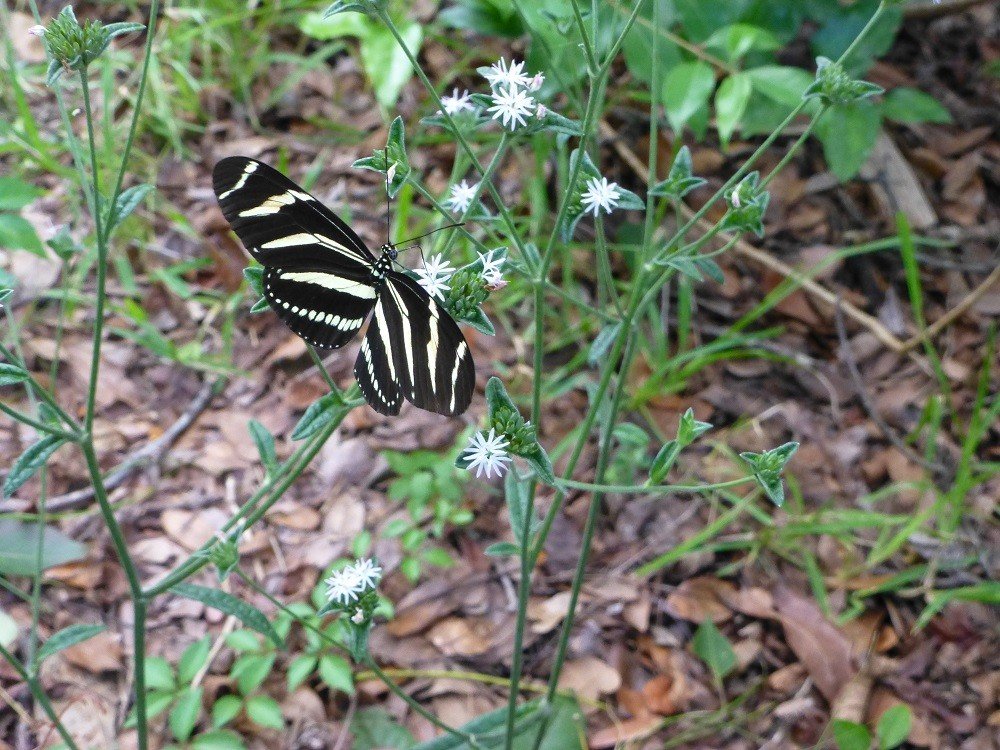
These guys have a very slow & lazy flight and prefer to stay in the shade of woodland edges in search of nectar & host plants. They prefer to lay their eggs in shady spots of the garden so prefer P. lutea and P. suberosa. Some passionflower vines, like the exotic red one, are toxic to their caterpillars and shouldn’t be used in the butterfly garden.
A zebra longwing’s native host plants are in the
Passifloraceae
(passionflower family)
The plants in this family that occur naturally in central Florida are:
Passiflora incarnata (purple passionflower)
Passiflora lutea (yellow passionflower)
Passiflora suberosa (corky stem passionflower)
Gulf Fritillary (Agraulis vanillae)
The gulf fritillary is a striking orange and silver flash that can be found in abundance anywhere there is a sunny spot with wildflowers and purple passionflower growing. Gulf fritillaries prefer sunny areas and their caterpillars will devour any and all purple passionflower vines so be sure to plant more than enough. They generally do not lay eggs on P. lutea or P suberosa if they have a choice because those two species grow in shady locations. Some passionflower vines, like the exotic red one, are toxic to their caterpillars and shouldn’t be used in the butterfly garden.
A gulf fritillary’s native host plants are in the
Passifloraceae
(passionflower family)
The plants in this family that occur naturally in central Florida are:
Passiflora incarnata (purple passionflower)
Passiflora lutea (yellow passionflower)
Passiflora suberosa (corky stem passionflower)

Monarch (Danaus plexippus)
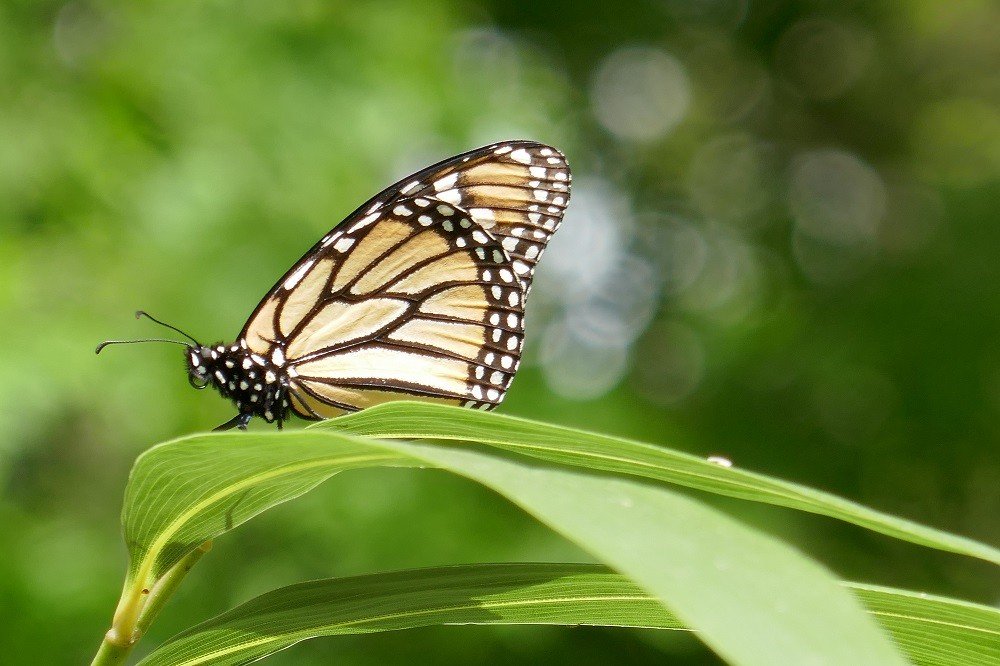
Monarch butterflies are beautiful, majestic, flyers. If you plant milkweed, their host plants, the females will lay their eggs on it, and devour it so plant as much as you can. Locate plants in as many areas as possible in order to spread out their food source and have enough to provide for hungry caterpillars.
A monarch’s native host plants are in the
Apocynaceae
(dogbane family)
The plants in this family that occur naturally in central Florida are:
Asclepias amplexicaulis (clasping milkweed)
Asclepias cinerea (Carolina milkweed)
Asclepias connivens (large flower milkweed)
Asclepias curtissii (Curtiss’ milkweed)
Asclepias feayi (Florida milkweed)
Asclepias humistrata (pinewoods milkweed)
Asclepias incarnata (swamp milkweed)
Asclepias lanceolata (few-flower milkweed)
Asclepias longifolia (long-leaf milkweed)
Asclepias pedicellata (savannah milkweed)
Asclepias perennis (swamp milkweed)
Asclepias tomentosa (velvet-leaf milkweed)
Asclepias tuberosa (butterfly milkweed)
Asclepias verticillata (whorled milkweed)
Asclepias viridis (green antelope-horn)
Asclepias viridula (green milkweed)
Cynanchum northropiae (fragrant swallow-wort)
Funastrum clausum (white twine-vine)
Matelea floridana (Florida milkvine)
Matelea pubiflora (trailing milkvine)
Orthosia scoparia (leafless swallow-wort)
Cloudless Sulphur (Phoebis sennae)
This beautiful, bright yellow, butterfly loves red flowers. I can always find the sulphurs nectaring on the red salvia, scarlet morning glory and firebush flowers. They roost at night under the leaves of shrubbery.
A cloudless sulphur’s native host plants are in the
Fabaceae
(pea family)
The plants in this family that occur naturally in central Florida are:
Senna ligustrina (privet wild sensitive plant) ✤ 30 Seeds
Senna marilandica (Maryland wild sensitive plant)
Senna obtusifolia (sicklepod)
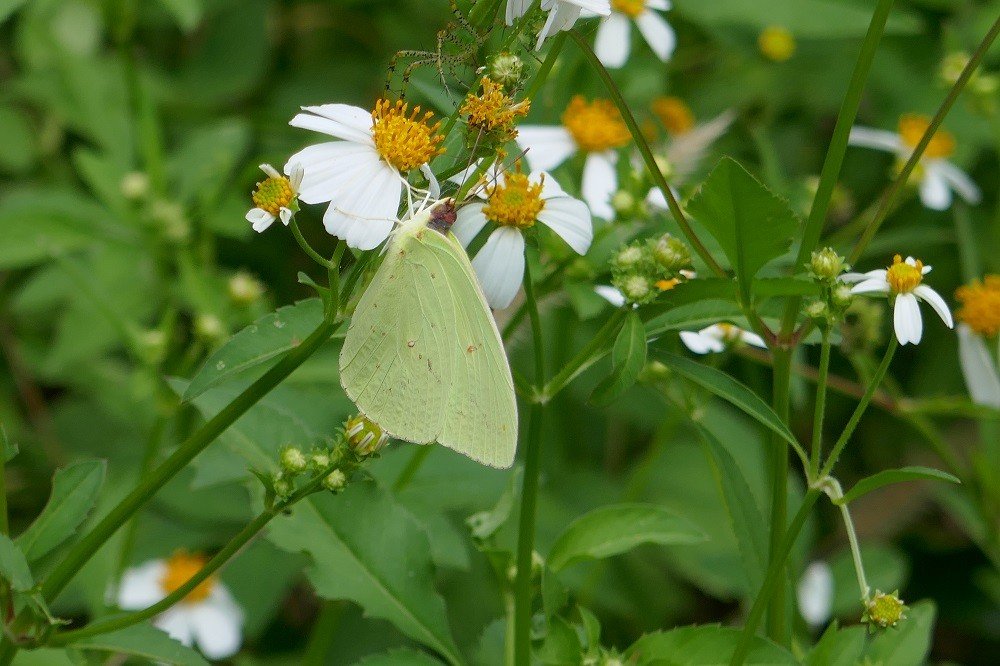
Black Swallowtail (Papilio polyxenes)

A dark swallowtail that loves the herb garden because it uses dill & fennel as host plants. If you start growing some of the native perennials they use as host plants you won’t have to keep going to the big box store to buy more dill to feed the caterpillars!
A black swallowtail’s native host plants are in the
Apiaceae
(celery family)
The plants in this family that occur naturally in central Florida are:
Chaerophyllum tainturieri (hairyfruit chervil)
Cicuta maculata (spotted water hemlock)
Cryptotaenia canadensis (Canadian honewort)
Daucus pusillus (American wild carrot)
Eryngium aquaticum (rattlesnakemaster)
Eryngium aromaticum (fragrant eryngo)
Eryngium baldwinii (Baldwin’s eryngo)
Eryngium prostratum (creeping eryngo)
Eryngium yuccifolium (button rattlesnakemaster)
Lilaeopsis carolinensis (Carolina grasswort)
Lilaeopsis chinensis (eastern grasswort)
Ptilimnium capillaceum (mock Bishop’s weed)
Sanicula canadensis (Canadian blacksnakeroot)
Spermolepis divaricata (roughfruit scaleseed)
Spermolepis echinata (bristly scaleseed)
Tiedemannia filiformis (water cowbane)
Trepocarpus aethusae (white nymph)
Zizia aurea (golden alexanders)
Zizia trifoliate (meadow alexanders)
Buckeye (Junonia coenia)
A medium sized butterfly with blue and black eyespots with an orange border. Canada toadflax (Linaria canadensis) comes up in various places on my property and if I don’t mow it until the summer I can always find buckeyes in abundance. They like low growing wildflowers for their nectar sources.
A buckeye’s native host plants are in the
Orobanchaceae
(broom-rape family)
The plants in this family that occur naturally in central Florida are:
Agalinis divaricata (pineland false foxglove)
Agalinis fasciculata (beach false foxglove)
Agalinis filicaulis (Jackson false foxglove)
Agalinis filifolia (Seminole false foxglove)
Agalinis harperi (Harper’s false foxglove)
Agalinis laxa (twoline false foxglove)
Agalinis linifolia (flaxleaf false foxglove)
Agalinis maritima (saltmarsh false foxglove)
Agalinis obtusifolia (tenlobe false foxglove)
Agalinis plukenetii (Plukenet’s false foxglove)
Agalinis purpurea (purple false foxglove)
Agalinis setacea (threadleaf false foxglove)
Agalinis tenuifolia (slenderleaf false foxglove)
Buchnera americana (American bluehearts)
Linaria canadensis (Canada toadflax) ✤ 1000 Seeds
Linaria floridana (Apalachicola toadflax)
Seymeria cassioides (yaupon blacksenna)
Seymeria pectinate (piedmont blacksenna)

American Lady (Vanessa virginiensis)
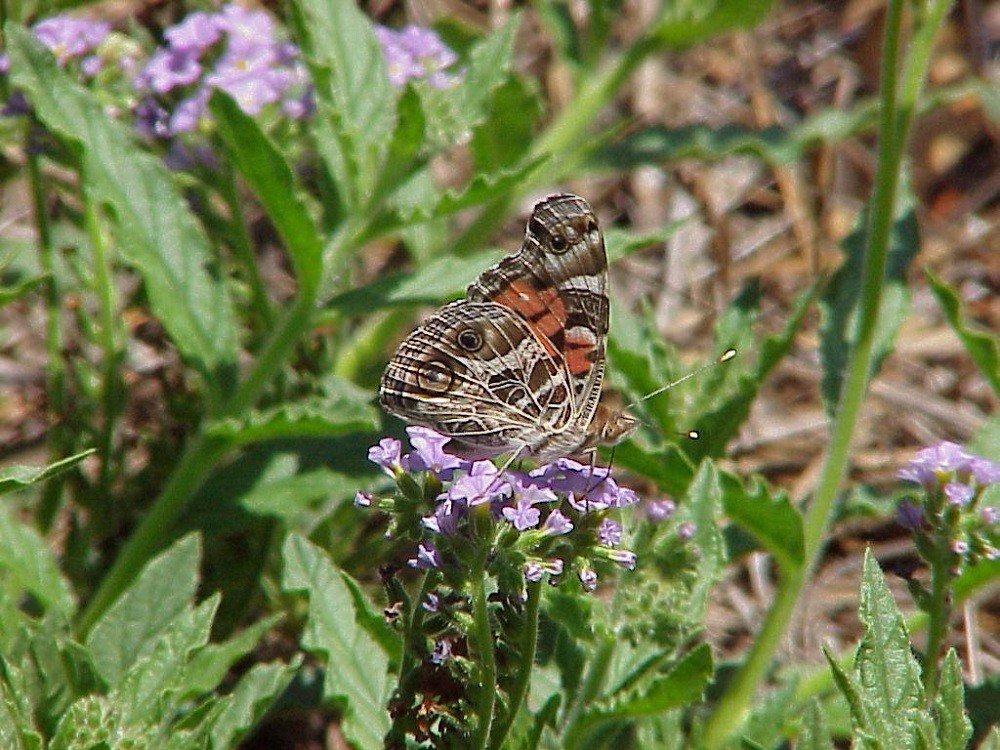
Each spring I let the cudweed come up where it likes in my flower gardens, and my property, in order to provide larval food for these beautiful butterflies. They are quite fast butterflies and tend to stay low to the ground in search of nectar flowers and host plants.
An American lady’s native host plants are in the
Asteraceae
(aster family)
The plants in this family that occur naturally in central Florida are:
Artemisia campestris subsp. caudata (field wormwood)
Gamochaeta antillana (delicate everlasting)
Gamochaeta argyrinea (silvery cudweed)
Gamochaeta purpurea (spoonleaf cudweed)
Vernonia angustifolia (tall ironweed)
Vernonia blodgettii (Florida ironweed)
Vernonia gigantea (giant ironweed)
My Etsy Store Items
You Might Also Like: Tufted Titmouse

